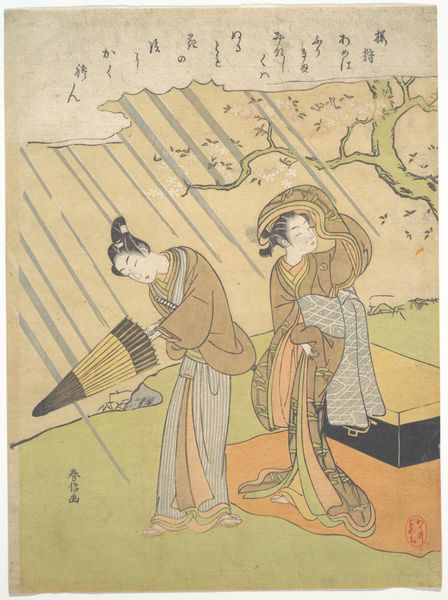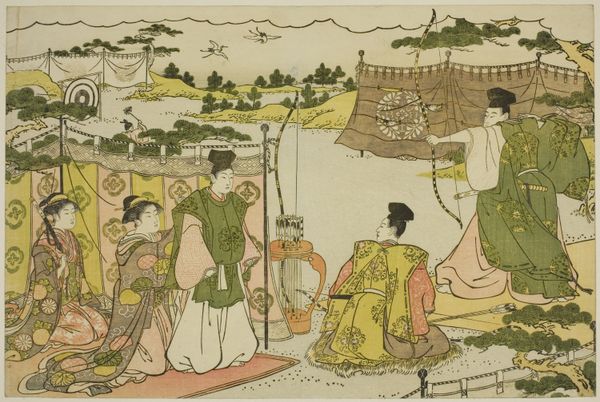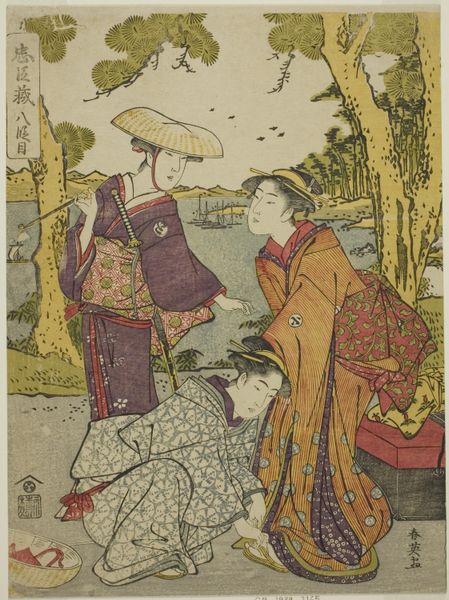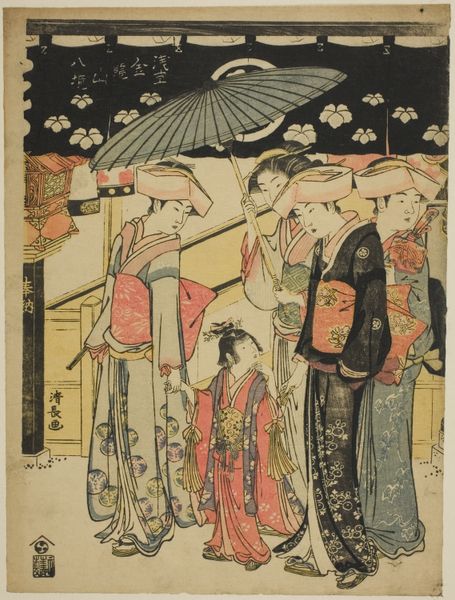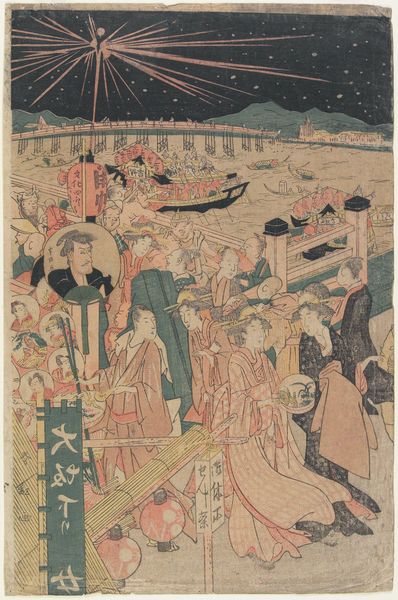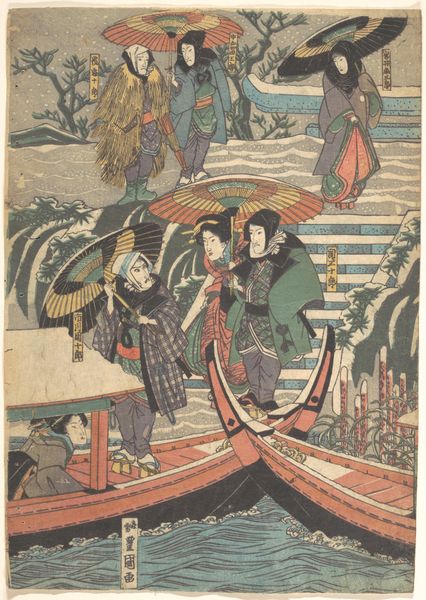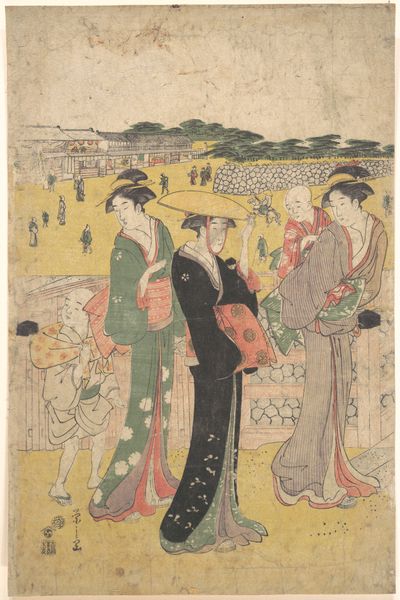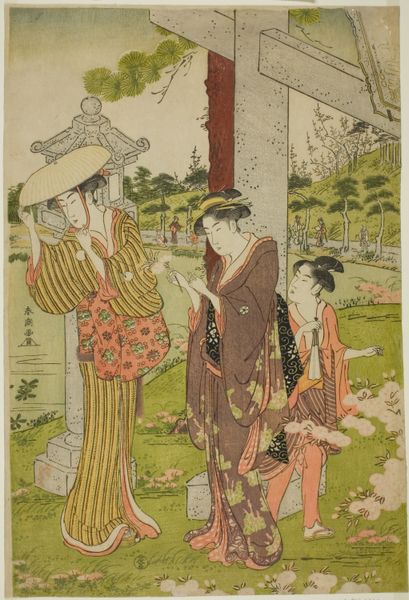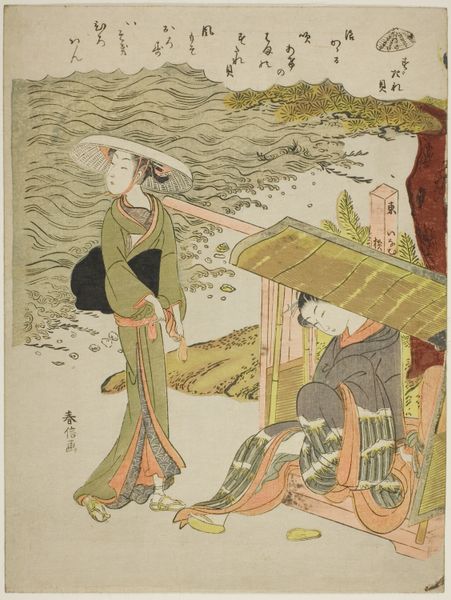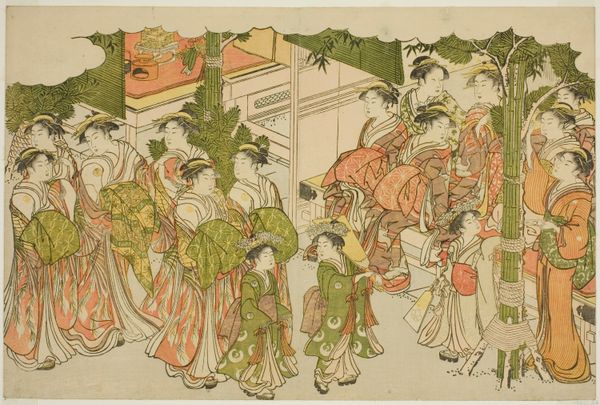
print, woodblock-print
# print
#
asian-art
#
landscape
#
ukiyo-e
#
figuration
#
woodblock-print
#
orientalism
#
genre-painting
Dimensions: 37.6 × 25.5 cm (14 13/16 × 10 in.)
Copyright: Public Domain
Curator: Katsukawa Shuncho’s woodblock print, “Viewing Cherry Blossoms at Ueno,” likely created between 1780 and 1801, depicts a genre scene common to the Ukiyo-e tradition. Editor: My immediate reaction is serenity. The composition guides my eye gently from left to right, across the strolling figures, towards the temple nestled in the background. The color palette is restrained yet harmonious, emphasizing muted pinks and greens. Curator: Indeed, Shuncho’s composition serves a larger cultural narrative. Consider the rising merchant class of the Edo period, seeking leisure and status, these cherry blossom viewings became important social rituals and display a performative social dynamic. Editor: And consider the economy of line; it's masterful. Look at how Shuncho suggests depth and texture in the women's garments with so few precisely placed lines. The arrangement of the figures creates an intriguing interplay of positive and negative space. Curator: The figures themselves adhere to certain beauty standards of the time – elongated faces, elaborate hairstyles. Note how this art form democratized imagery; these prints allowed for a wider dissemination of art to the populace, reflecting cultural values and aspirations beyond the aristocracy. Editor: Yet there’s a curious ambiguity in their expressions. Their faces lack detail. This focuses the attention less on the individual and more on the aesthetic interplay between shapes, lines and colors across the plane. It’s almost as if the print seeks to represent pure beauty over explicit emotions. Curator: Absolutely. It's interesting to consider how prints such as this, intended for mass consumption, reinforced existing social structures. Editor: Ultimately, "Viewing Cherry Blossoms at Ueno," it is an exquisite testament to the expressive potential inherent within what seems like the simplest of forms and media. The harmony and precision really speaks for itself. Curator: For me, its beauty resides in its cultural weight; capturing a transient yet resonant slice of life from Edo-period Japan, reminding us of art’s capacity to capture culture.
Comments
No comments
Be the first to comment and join the conversation on the ultimate creative platform.

